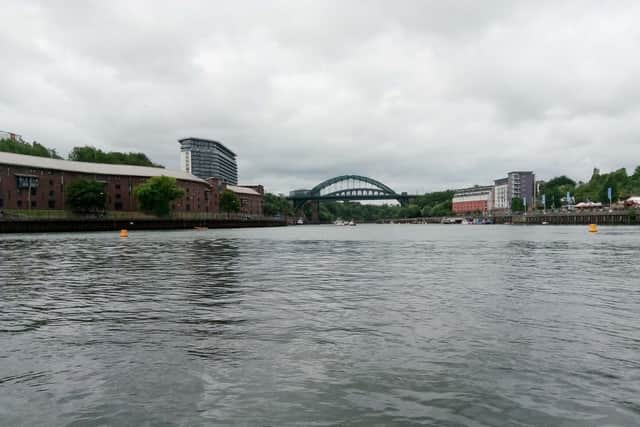Artificial rock pools and mussel ropes part of wildlife habitat creation plan for 'dolphins' on River Wear at Sunderland
and live on Freeview channel 276
Sunderland City Council’s planning department, this month, received an application for Palmers Hill Quay on the northern side of the River Wear.
The site, which sits to the east of the Wearmouth Bridge and south of Bonners Raff, includes a constructed foreshore as well as a number of standing concrete and timber structures known as ‘dolphins’.
Advertisement
Hide AdAdvertisement
Hide AdNew plans from Groundwork North East and Cumbria (GNEC), which form part of the ‘Revitalising our Estuaries’ programme, propose steps to restore nature and boost biodiversity.


Documents submitted to the local authority state GNEC aims to “deliver interventions that protect and restore the marine environment”.
The charity was previously commissioned by the Environment Agency to identify “opportunities for environmental enhancements to the Wear Estuary” which has been “heavily modified by human activity” over the years.
According to a design and access statement submitted to council officials, “unnatural hard, steep or vertical banks reduce habitat and biodiversity preventing native plants and animals from inhabiting the estuary”.
Advertisement
Hide AdAdvertisement
Hide AdAs part of a wider survey, Palmers Hill Quay in Sunderland was identified as an area that could benefit from ecological works to “improve biodiversity provision and habitat connectivity”.
Submitted plans describe the works as the “installation of artificial rock pools, mussel ropes and timber framed upper shore habitat”.
A scoping report prepared for the applicant provides more details of the bespoke ‘constructed habitats’ proposed for Palmers Hill Quay.
This includes ‘bioreceptive PodPools’ made from natural concrete which would be positioned in groups along the riverbank to create rock pool habitats.
Advertisement
Hide AdAdvertisement
Hide AdElsewhere, the timber platform could benefit from ‘mussel ropes’ attached between timbers to help extend existing mussel beds.
Other measures include magnetically-fixed rock pools installed on various parts of the concrete dolphin platforms’ steel infrastructure.
A design and access statement adds the scheme would help to “emulate natural estuarine intertidal habitats”.
A decision on the application is expected later this year once a period of council consultation has concluded.
For more information on the planning application or to track its progress, visit Sunderland City Council’s online planning portal and search reference: 22/01818/FU4